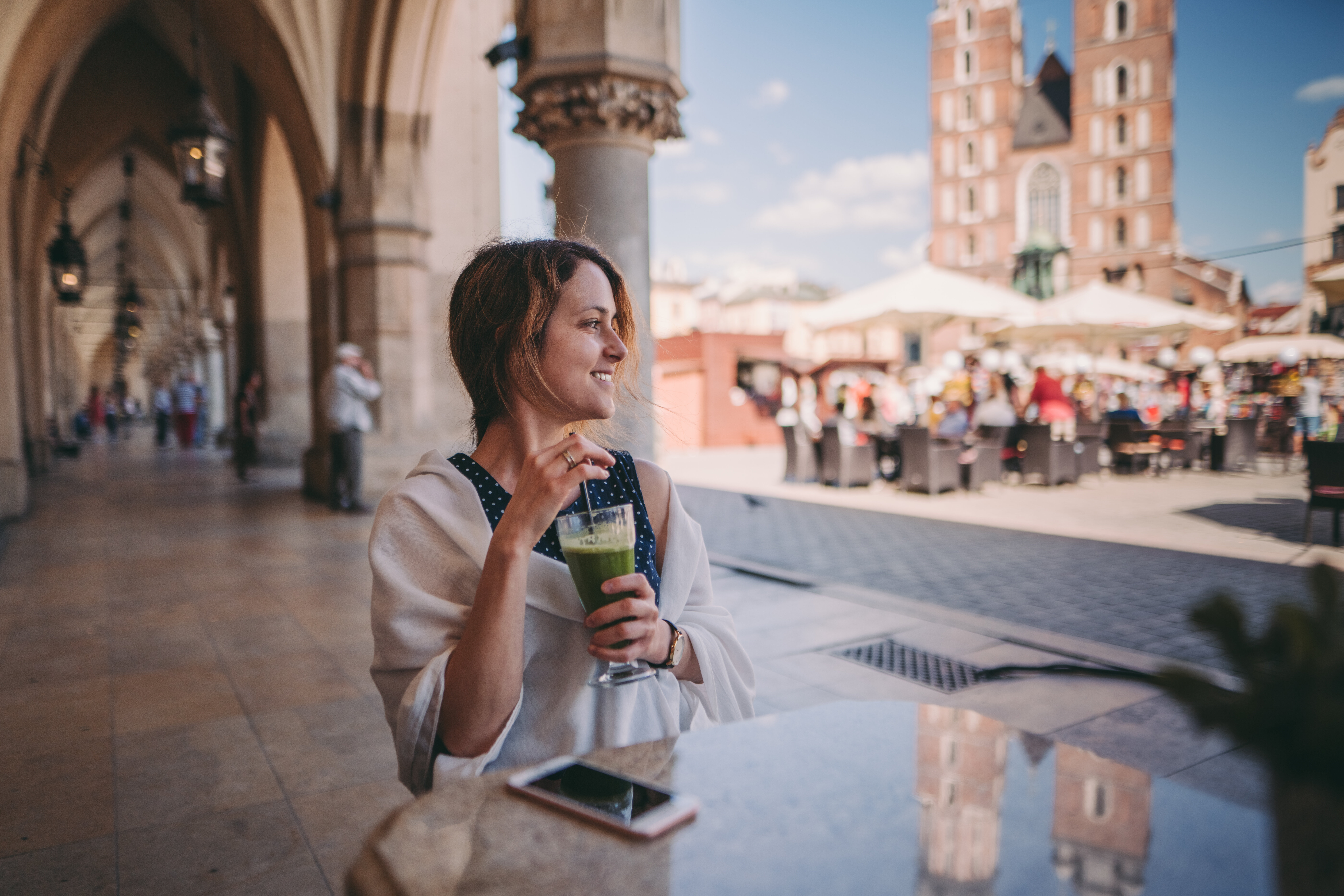This New Travel Trend Might Be The Key To A Better Vacation
9 min read
In the rush of day-to-day life, we don’t always have the opportunity to slow down and move at our own pace. Even on vacation, there’s an urge to visit, do and taste as many things as possible in a new destination or multiple destinations.
“I’ve heard countless times how exhausted people are when they come back from their vacation and feel like they ‘need a vacation from their vacation,’ and that’s because many times we pack so much into a very short amount of time,” said travel blogger Esther Susag. “We want to see everything, do everything, and not waste a minute.”
There is, however, another approach to globetrotting that many seasoned tourists recommend: slow travel. But what exactly is slow travel, and how do you take full advantage of this kind of trip? Below, travel experts break it down.
What exactly is slow travel?
“Slow travel is about quality over quantity,” said Phil Dengler, a co-founder of travel information site The Vacationer. “It is also about immersing yourself in the local culture. Traditional vacations often involve seeing as many things as possible in a short time. While there is nothing wrong with that, it can feel very superficial. It can also feel overwhelming and not like the ideal relaxing vacation.”
As the name suggests, slow travel generally entails slowing down and savoring each moment, rather than rushing to check off bucket list items.
“Slow travel may mean different things to different travelers, but I define it as staying in one place for longer and going deeper into the local culture,” said Paul Jacobs, general manager and vice president of Kayak North America. “It’s taking the time to make real connections with locals versus jam-packing a schedule full of tours. It’s staying in Kyoto at a Ryokan instead of city hopping throughout Asia.”
He believes slow travel is becoming increasingly popular and pointed to data that shows the length of hotel stays is already up 10% in 2023 compared to last year. Still, slow travel doesn’t necessarily require long stays in one place.
“For me, slow traveling isn’t necessarily about the number of days you are spending in a place,” said travel blogger Sean Lau. “You can slow travel with just a few days or with a few months ― it all depends on the level of connection you would like with your destination, allowing you to gain a deeper appreciation of the culture and understand the local environment better.”
For travel expert and author La Carmina, slow travel is a meditative approach to traveling that allows people to stop and smell the roses ― quite literally.
“It’s about being fully present in the moment and experiencing the sights, sounds and sensations around you without distraction ― letting the experience unfold at its own pace and without expectations,” she said. “To me, slow travel doesn’t have a strict definition or certain mandatory elements, such as using slower modes of transport or sticking to a single city or country for a certain amount of time, but rather is about the compassionate awareness one brings to being a visitor in a destination.”

What are the benefits of slow travel?
“When you travel at a slower pace and not so rushed, you naturally immerse yourself in the culture and place that you’re in and really try to get to know it on a more personal level,” Susag said.
“You talk with more locals and do more ‘off the beaten path’ activities, and not just things you see on Trip Advisor,” she added. “Also, when you do start to talk with the locals more, usually they want you to have the best experience and will show you some of their favorite spots which naturally leads to a more immersive and personal experience.”
Getting to know locals and their culture and lifestyle more intimately and authentically will create rewarding experiences and memories you can carry with you long after your return home. You may even make deep connections and friendships that lead you to return in the future.
“If you want to really unplug and relax without the stresses of traveling then slow travel may be for you,” said Mark Wolters, the creator of the popular YouTube travel channel Wolters World. “You get to unpack your suitcases less, take fewer planes, trains and automobiles and just relax in a destination.”
He noted that slow travel is excellent for practicing foreign language skills, as there are more opportunities for meaningful conversations with locals.
“If you are traveling with children, slow travel is a good way to introduce them to international travel and getting them to see the differences in cultures,” Wolters noted. “When your kids are playing at the local playground with other children they see that there are not too many differences between themselves and the kids in this new country you are visiting.”
He said his children have also learned how to make pupusas in El Salvador, pasta in Italy, and sandwiches in Portugal because the family likes to return to the same eateries and make connections with the people working there.
“There is nothing like going back to the same restaurant a few times and the waiters and owners start to see you as a friend instead of a tourist looking for a quick bite to eat,” Wolters said. “Slow travel also gives your family a chance to focus on spending time together doing tourist activities, but also just being together as a family instead of just trying to get in as many museums as possible.”
There are practical upsides to this approach to travel as well.
“I love slow traveling for its environmental benefits,” Lau said. “By staying in one location for longer periods of time, there are fewer carbon emissions associated with transportation such as flights and buses.”
In addition to less transit between destinations, slow travel also tends to entail fewer car rides within a single destination due to fewer activities. Travelers can also feel less rushed in getting one place to another and take public transit instead. You may opt to stay away from the touristy city center and save money on accommodations as well.
“Slow travel is often more cost-effective than traditional travel since you are not doing as many things as possible,” Dengler said. “It is also more relaxing since you are not always worrying about the next item on your itinerary.”

How can you maximize the slow travel experience?
There’s no one right way to engage in slow travel, but there are some helpful factors to keep in mind if you want to maximize the experience.
“Your to-do list should be very short or nonexistent,” Dengler said. “Either come with a plan to spend most of your time at only a few locations or take recommendations from locals on the fly. When visiting a spot or destination, you should aim to understand its meaning as opposed to just checking it off your list. In most cases, you will have to spend more time than usual, but you should come away with a much deeper understanding.”
Resist the temptation to see every sight and eat every dish in one or two days. It’s not about rushing around to check off the boxes of attractions.
“Spread out your tourist visits over a longer period of time,” Wolters said. “This way you can spend your morning at a café, then midday at a museum, then the afternoon and early evening at a park reading your favorite book, instead of seeing two museums in the morning and one in the afternoon and then a theater show at night with a ghost tour at midnight.”
His family frequently tries to take local cultural classes, like a painting or cooking class. In addition to learning more about the art or cuisine, you can ask the instructor additional questions and learn more about the area.
“In the era of remote work, it’s become easier to engage in slow travel,” noted Jessica van Dop DeJesus, the founder and editor of food and travel blog The Dining Traveler. “For example, spending more than a week in a destination and taking the time to walk around lesser-known neighborhoods, frequenting a cafe or restaurant several times, and attending a sporting or cultural event that’s important to those living in that location.”
Consider staying in an independent boutique hotel or vacation rental away from the typical touristy spots to get a sense of where locals live. Take advantage of the quiet and relaxation you can’t find in the typical crowded areas as well.
“One of my favorite ways to experience slow travel is by renting a villa by the beach,” La Carmina said, recalling a recent trip to Tulum. “Rather than being in a busy and commercial resort, I enjoyed peaceful days with only the sounds of the ocean near my doorstep. I had a fully stocked kitchen, so I could simply relax in my warm surroundings without feeling pressure to go out or sightsee. Some days were spent lounging in the modern villa’s pool, or meandering to the nearby beach.”
If you’re staying in a destination that lacks strong public transit infrastructure or you simply want to explore a little farther afield, renting a car can offer the opportunity to move at your own pace.
“Pull over and enjoy the scenic overlooks and don’t be afraid to take detours and stray off the beaten path when traveling,” said David Woody, country development and travel expert at SIXT.
You may even plan a leisurely paced road trip as a form of slow travel.
“Many travelers are now choosing to drive to destinations instead of flying as part of the slower travel movement, which offers them more flexibility to enjoy the journey as well as the destination,” Woody said. “We recommend mapping out your route and the legs you want to drive per day but only book the first two or three nights of accommodation to remain flexible should your route or timing change.”




